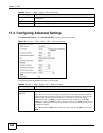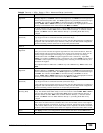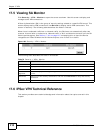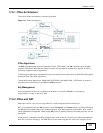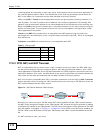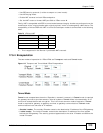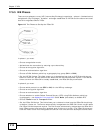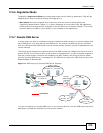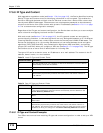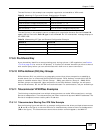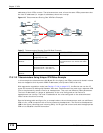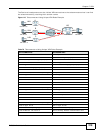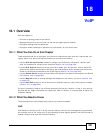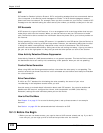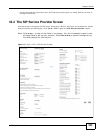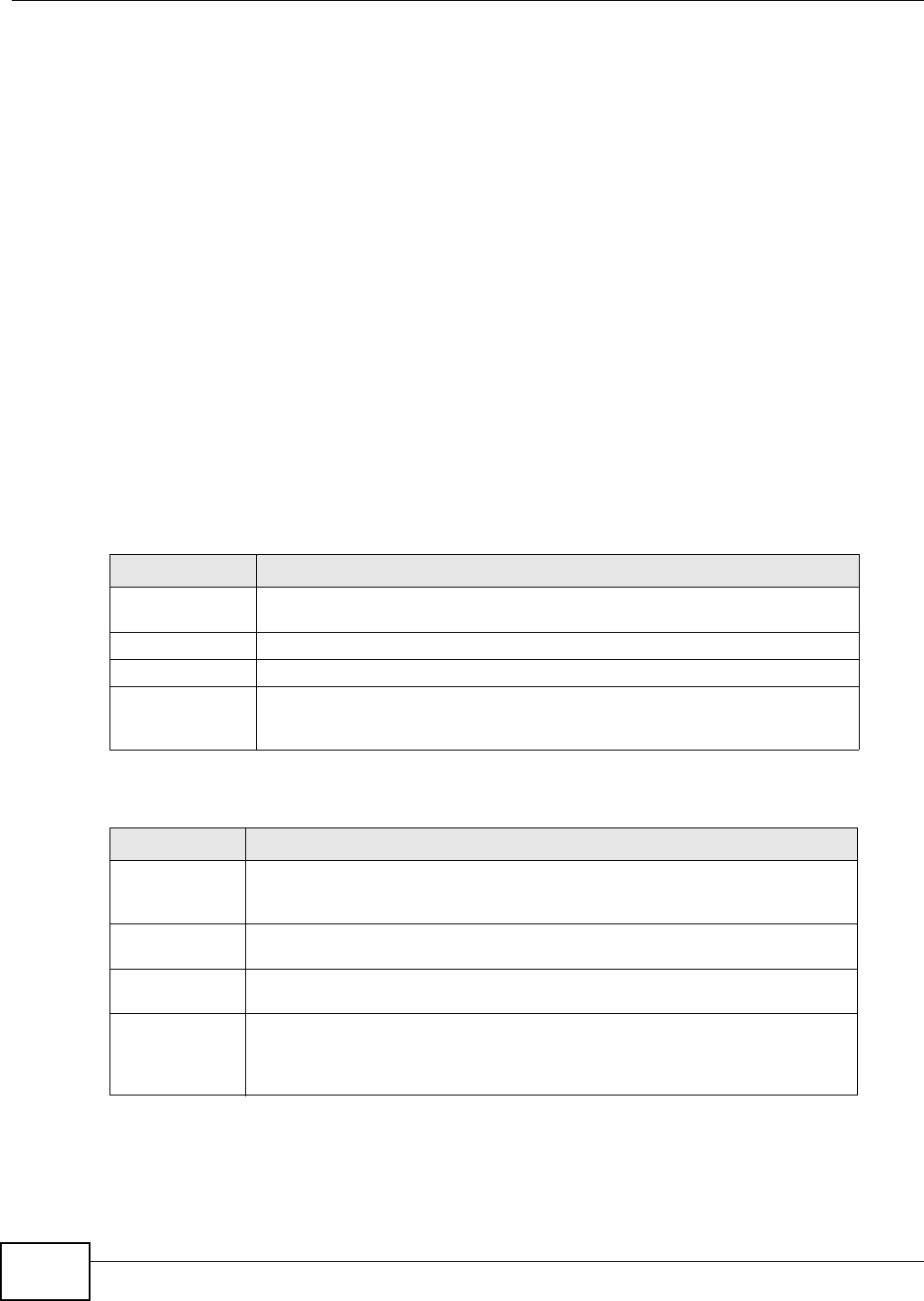
Chapter 17 VPN
EMG5324-D10A User’s Guide
216
17.6.8 ID Type and Content
With aggressive negotiation mode (seeSection 17.6.6 on page 215), the Device identifies incoming
SAs by ID type and content since this identifying information is not encrypted. This enables the
Device to distinguish between multiple rules for SAs that connect from remote IPSec routers that
have dynamic WAN IP addresses. Telecommuters can use separate passwords to simultaneously
connect to the Device from IPSec routers with dynamic IP addresses (seeSection 17.6.11 on page
217 for a telecommuter configuration example).
Regardless of the ID type and content configuration, the Device does not allow you to save multiple
active rules with overlapping local and remote IP addresses.
With main mode (seeSection 17.6.6 on page 215), the ID type and content are encrypted to
provide identity protection. In this case the Device can only distinguish between up to 12 different
incoming SAs that connect from remote IPSec routers that have dynamic WAN IP addresses. The
Device can distinguish up to 12 incoming SAs because you can select between three encryption
algorithms (DES, 3DES and AES), two authentication algorithms (MD5 and SHA1) and two key
groups (DH1 and DH2) when you configure a VPN rule (seeSection 17.4 on page 208). The ID type
and content act as an extra level of identification for incoming SAs.
The type of ID can be a domain name, an IP address or an e-mail address. The content is the IP
address, domain name, or e-mail address.
17.6.8.1 ID Type and Content Examples
Two IPSec routers must have matching ID type and content configuration in order to set up a VPN
tunnel.
Table 73 Local ID Type and Content Fields
LOCAL ID TYPE= CONTENT=
IP Type the IP address of your computer or leave the field blank to have the Device
automatically use its own IP address.
DNS Type a domain name (up to 31 characters) by which to identify this Device.
E-mail Type an e-mail address (up to 31 characters) by which to identify this Device.
The domain name or e-mail address that you use in the Content field is used for
identification purposes only and does not need to be a real domain name or e-
mail address.
Table 74 Peer ID Type and Content Fields
PEER ID TYPE= CONTENT=
IP Type the IP address of the computer with which you will make the VPN connection
or leave the field blank to have the Device automatically use the address in the
Secure Gateway Address field.
DNS Type a domain name (up to 31 characters) by which to identify the remote IPSec
router.
E-mail Type an e-mail address (up to 31 characters) by which to identify the remote
IPSec router.
The domain name or e-mail address that you use in the Content field is used for
identification purposes only and does not need to be a real domain name or e-
mail address. The domain name also does not have to match the remote router’s
IP address or what you configure in the Secure Gateway Address field below.



